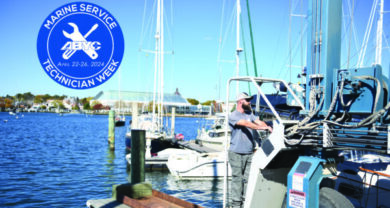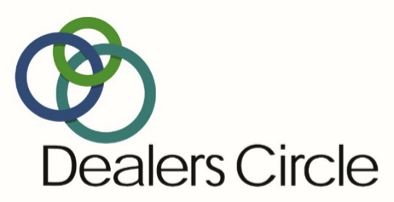New Technologies Hit Propulsion Market
Today jet drives, steerable nozzles, and electric motors represent the new technologies in the propulsion field.
But with all the competition to develop the next big thing, and all the innovations that are the result, how are those involved with propulsion really doing?
Is business good?
And what will come next to help better, more efficiently, move boats from point A to point B?
The JetPac
Outboard Propulsion Systems, LLC of Ormond Beach, Florida believes it has the answer to that final question. Or at least part of the answer.
The new water-jet drive JetPac from OPS has put to sea, and the results have been encouraging, says Mike Moses, a director at Outboard Propulsion Systems.
“It performs as well as an outboard,” Moses says. “The common quote we get from people [riding in the demo boat outfitted with JetPac] is ‘I thought I’d like it. But I didn’t think I’d like it this much.’ The reaction is typically amazement.”
JetPac is a stock gasoline or diesel automotive engine coupled to a large-diameter (250mm) waterjet, completely enclosed in a fiberglass shell.
It is mounted on the boat’s transom – OPS says it will fit about 85 percent of boats 15 to 25 feet in length without hull modification – and is self buoyant, to help the vessel craft plane quickly.
The engine is offered in either a 2.8 liter, in-line 4-cylinder, 150 horsepower diesel, or a 5.7 liter 275 hp gasoline model.
As with an automobile, a closed loop cooling system is used. Fresh water circulates through the engine, the water-cooled exhaust manifold, and the oil cooler, where applicable. The engine is not exposed to seawater during operation.
Hot water is circulated through the heat exchanger and is cooled by the circulating seawater.
Three main design issues have typically been the cause of problems for the jet drive systems of the past, according to Moses.
The first has been planing problems, due to the engines having had to be placed too far forward in previous designs causing center of gravity problems.
The second has been water intakes, that have been cut into the bottom of the boat, an invasive procedure which obviously keeps the intakes very small.
And the third involves the use of smaller diameter jets, which are not quite as efficient as they could be.
“Most conventional water jets on small boats are driven at a high engine speed,” explained OPS president William Lawson. “A large diameter jet could be used in combination with a transmission to reduce the speed of the jet; however, this would add more weight, and require moving the engine even further forward. Conversely, JetPac uses a large diameter water jet and a gear ratio designed specifically to deliver optimum performance. With our product, weight and location are not a factor.”
And Moses says the JetPac is more environmentally friendly than a standard outboard engine.
“There’s a little more vibration than an outboard, but it’s quiet and there’s no smoke,” he said. “We defy people to say they smell any fumes when they get onboard. Nobody has yet.
Moses also extols the handling of boats equipped with the JetPac.
“I haven’t ever been in a single-engine boat that can handle as well,” he said. “To drive the boat is truly a pleasure. It accelerates as good as anything I’ve ever been on.”
Moses does acknowledge that outboards still have a higher top speed, but says OPS can build engines that will go faster, if that’s what the consumer ultimately wants.
And, as excited as he is about jet-drive technology, Moses also understands its current place in the propulsion market.
“Outboard’s still seem to be king,” Moses says.
Solas Propellers
Rick Norgart, the international marketing manager for Solas Science & Engineering Co. Ltd., a propeller manufacturer, agrees.
And he thinks the explanation for that is pretty simple.
“It’s like the wheel, it just works,” Norgart says. “I don’t see anything earth shaking going on [in propulsion]. There is no magic bullet.”
Norgart says the Solas line of four-blade aluminum propellers is doing very well. The squeeze-cast system his company employs allows Solas to produce a stronger aluminum blade that can provide almost as much performance as stainless steel, if not quite as much durability over the long run.
Solas says it has become a specialist combining the technology of computational fluid dynamics – using computers and equations to provide solutions to the problems associated with waterflow over external shapes – and expertise of customer feedback in design of its propulsion systems.
Business was good last year for Solas, according to Norgart, with “a huge sales increase,” and the company increasing its marketshare also.
He believes that success will continue in 2004.
“A lot of companies can’t compete with our prices,” Norgart said.
And after a slow beginning, Moses thinks JetPac is in for a strong 2004 as well.
“This year has started out very well for us,” Moses said. “Last year nobody knew who we were, this year people are starting to see us.”
Outboard Propulsion Systems and Solas represent just a small cross section of the propulsion segment of the boating industry.
But both are innovators in the field, and each sees continued growth on the horizon.
Each will also do its best to make sure it reaches that horizon more quickly than the other, taking its customers along for the ride.
– Jonathan Mohr
Product Listing
Outboard Propulsion Systems
After five years of research and testing, the JetPac Outboard Propulsion System says it is the first to mate a reliable automotive engine with a high performance, large diameter waterjet in a single stand-alone unit. Available with either a 150 horsepower turbo-diesel or a 275 hp V-8 gasoline engine mated to its 250-mm water jet, the JetPac uses a stainless steel heat exchanger in place of a radiator. The water-jet unit is also fabricated from stainless steel, and features a sealed bearing system with biodegradable grease, mounted into a fiberglass shell sealed from the elements. OPI says the JetPac will fit 85 percent of boats 15’ to 25’ without hull modification. Outdoor Propulsion Systems, LLC, 1815 N. U.S. Hwy. 1. Ormond Beach, FL 32174; 386/676-7685; www.jetpac.us.
Minn Kota E-Drive
Featuring a two horsepower, 48-volt motor that can propel a 24-foot pontoon boat up to five miles per hour, the Minn Kota E-Drive Electric Outboard gives pontoon owners an alternative to the gasoline motor. A built-in Maximizer feature allows the E-Drive to deliver up to two hours of continuous run time at 100 percent power, while a realtime battery gauge indicates power level, battery charge and hours of time remaining at current power on a LCD display. Minn Kota, 555 Main Street, Ste. 022, Racine, Wisc. 53403;800/299-2592;www.minnkotamotors.com.
Seahawk propellers
Seahawk’s stainless steel Slipstream range of folding sailboat propellers, 14″ through 20’ diameter and virtually any pitch, were introduced in 2003. Available in shaft drive and also as a saildrive model, with a ‘fail-safe’ cushion hub, these propellers allow users to replace all wearing areas, such as blade pivot points and blade stops, when worn. www.seahawk.com.
Poseidon Steerable Nozzles
Pegasus non-metallic steerable nozzles help increase maneuverablilty and protect propellers while at the same time improving their efficiency. And Poseidon says it can now make nozzles more affordable by combining them with the rudder to form one unit. 866/874-4994; info@yachtacoustics.com.
Turning Point Propellers
Turning Point’s Rascal series props feature 11″ and 13″ pitches with increased blade surfaces, improved geometry and specially designed cupping to allow boaters with 15 to 30 horsepower engines to maximize their performance. Contact Turning Point Propellers Inc., 896 Cambridge Drive, Elk Grove Village, IL 60007; Phone: 847/437-6800; www.turningpointpropellers.com
Marine Propulsion Research
The newly designed Sea Chest from Marine Propulsion Research Inc., provides an abundant supply of inlet water at speed and provisions for anti-clogging are standard – either manual or automatic. The unit is intended to supply watercraft of 18’ to 100’ in length with provisions for air conditioning, generators, etc., but sizes are available for larger craft. Call 941/749-1900 for information.




